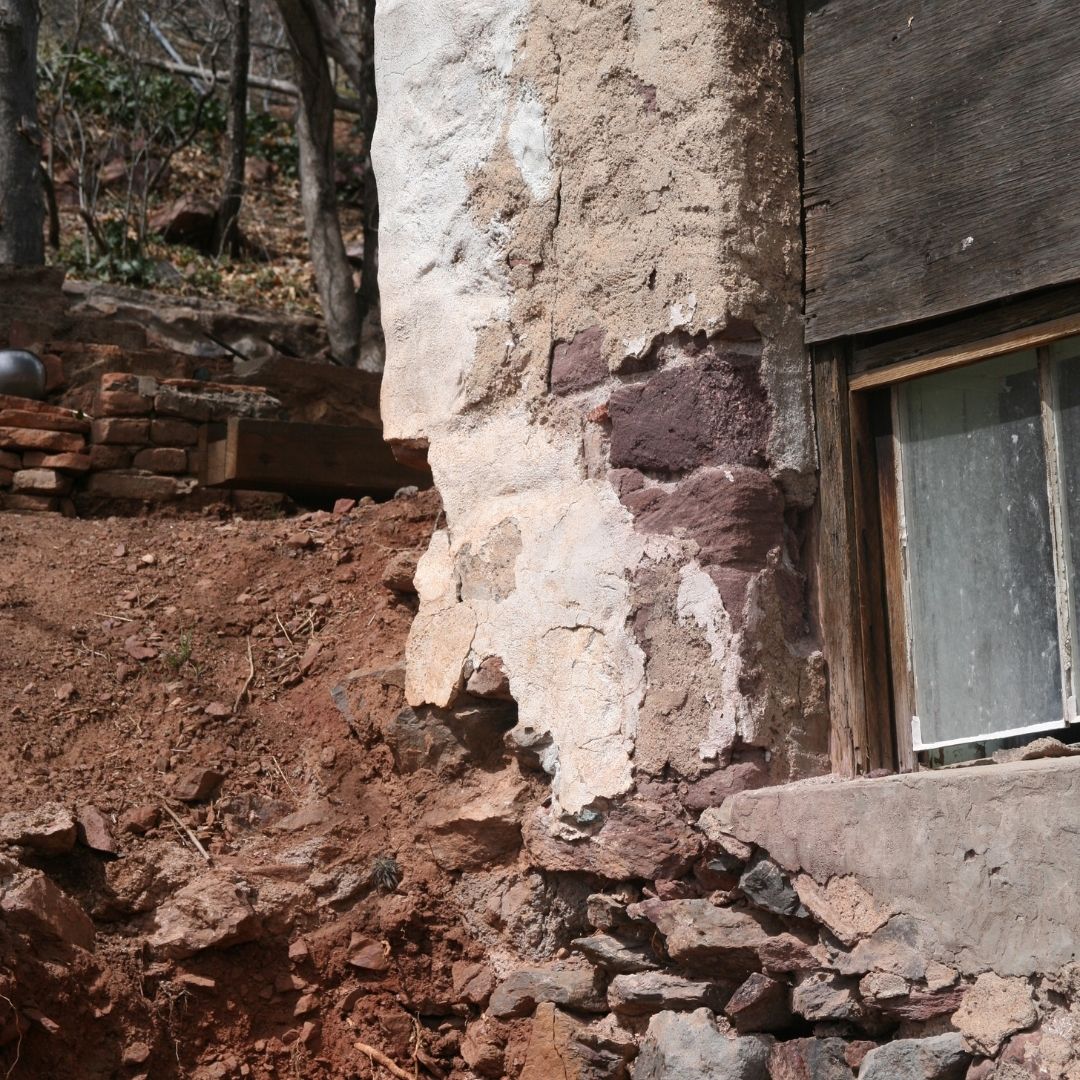
For a structure to stand strong and remain strong for a long time, it needs to have a stable foundation. A stable foundation is a vital part of any structure. The stability of the foundation can help a structure withstand the weight of the building and everything inside. Likewise, a stable foundation can protect the structure from the effects of time and weathering.
To keep a concrete foundation intact and structurally sound, regular maintenance and repair is essential. So, today we will be taking a look at why some foundations deteriorate and provide a step-by-step guide on how to repair a crumbling concrete foundation.
If you’d like a quicker or more specific answer to your concrete repair questions, call the experts at TMC Engineering! If you’re in Southern California, we can help educate you on your problem and perform whatever repair is necessary. We’ve got an expert solution for your concrete or asphalt concern!

How To Repair Concrete Foundation Crumbling
Over time, even the most durable materials will show signs of wear from constant exposure to weathering elements. Concrete foundations are no exception, as the combinations of moisture, freezing temperatures, and soil settlement can gradually lead to crumbling.
Understanding why foundations crumble, and how to identify signs that a foundation is crumbling is paramount. You can’t address the faults and find the right solutions without it! However, when you know the cause you can use the right techniques and appropriate tools to restore a crumbling concrete foundation to its former glory.
Cracks, dust, and loose concrete are common signs that a foundation is crumbling and in need of repair. It is important to execute repairs as soon as you recognize these signs to ensure the damage doesn’t worsen and lead to irreversible structural failure.
Why Is Concrete Foundation Crumbling?
There are a number of reasons a concrete foundation might be crumbling. Some are attributed to nature, while some are due to poor construction and maintenance practices. Understanding each of these causes of crumbling can help in avoiding them and correcting them early to prevent structural foundation problems.
Here are some of the common factors:
Moisture Intrusion
Concrete surfaces located close to groundwater are likely to wear as a result of leaks in the groundwater over time. The same thing applies to surfaces that have poor drainage network. The concrete surface becomes damp over time due to moisture intrusion and can lead to rebar corrosion and cracks as the steel expands. After a few years, this erodes the concrete from the inside and can cause crumbling.
Soil Erosion
The supportive soil under the foundation is important for the stability of any structure. Soil erosion, tremors, and other natural occurrences that affect the compactness of this supportive soil will, in turn, affect foundations as well. This is because voids are easily created in the surfaces and such voids cannot be easily bridged. To prevent this, proper compaction and drainage lines must be ensured. For concrete surfaces that already have voids, you can check our post on how to fill voids in concrete slabs [LINK WHEN LIVE] for more information.
Poor Construction Practices
The way a foundation and building is constructed determines whether such structure will stand the test of time. If the work isn’t done right, crumbling and other foundation issues are almost inevitable. For example, if the concrete used was not mixed properly or if the foundation was not properly cured, it can be more susceptible to cracking and crumbling.
For more on how construction practices affect concrete surfaces, check out our post on why does concrete crack.
Temperature Swings
Where foundations experience rapid temperature swings, the expansion and contraction stresses concrete and causes the surface to crumble. In no time, scaling and cracking are quite visible up close.
Improper Chemicals Use
The use of chemicals such as salts and deicers on concrete surfaces can damage the concrete as well. With enough prolonged use, these chemicals can cause the concrete to break down and crumble.
Overloading
There is a limit to the weight a foundation is meant to carry. If the foundation is overloaded, it can start to crack and crumble. This can easily be caused by adding too much weight to the structure or by adding the weight unevenly. It takes a while to notice signs of foundation crumbling when the issue is overloading because the foundation initially will likely hold the weight. However, over the years the concrete will deteriorate if the weight is not evenly balanced or distributed.
How To Fix Crumbling Concrete Foundation
Step 1: Inspect the damage.
The first step is to assess the damage. This will help you determine the extent of the repairs that are needed. Take pictures of the damage and make note of the location and severity of the cracks. Take note of cracked, crumbling, or dislodged areas that will require patching or rebuilding.
Step 2: Remove the loose concrete.
Once you have assessed the damage, you need to clean the area. This will help to remove any loose debris and make it easier to apply the patching material. Chip away at any cracked sections that present an immediate safety hazard using a hammer or rotary hammer. Use a wire brush or a grinder to clean the cracks and any loose concrete.
Step 3: Clean the exposed rebar.
Use a garden hose and scrub brush to clean any dirt or residue on the exposed bar. This will help to fully expose cracks and crumbling areas for repair. It also helps the new patching material to bond to the old concrete properly.
Step 4: Mix the concrete patching material.
There are a number of different patching materials available, so be sure to choose one that is appropriate for the type of damage that you are repairing. Whether Portland cement or commercial patching compound, mix according to package directions until achieving a stiff, peanut butter-like consistency for application.
Step 5: Apply the patching material.
Once the area is clean, you can apply the patching material. For small cracks, you can use a concrete caulk. For larger cracks, you may need to use a patching compound or epoxy injection. Trowel or force the freshly mixed concrete into all deficient areas, sloping it slightly above the surrounding surface for grinding later. Tap and consolidate well using a wooden float for compaction.
Step 6: Finish and cure the concrete patches.
Once the patching has set up slightly, finish smoothing and shaping it level and flush with the surrounding foundation using a wood float or damp sponge brush. Maintain moisture on the new concrete for a full week of curing by misting daily with a spray bottle or plastic sheeting.
Step 7: Seal the foundation.
Upon full curing of the patches, seal the entire foundation. A flexible cement paint or elastomeric coating is best for sealing, as it stretches slightly with any movement to avoid future cracking. Use a trowel or float to smooth out the patching material and then apply a high-quality sealer to the entire area. Once the repair is complete, it is important to monitor it regularly. This will help you to catch any problems early on and make sure that the repair is holding up.
At TMC Engineering, our trained team has extensive experience repairing and waterproofing failing concrete foundations to prevent costly structural issues. We utilize specialized equipment and certified application methods. Contact us today for a free estimate on an inspection, repairs or complete foundation renewal project for your commercial building. Your structure’s longevity and safety depend on it.
Repairing a crumbling concrete foundation is essential for the integrity of your whole building!
While concrete provides durable base when constructed properly, no material is forever protected from environmental stressors without proper upkeep. Foundations bearing the constant pull of drainage and temperature fluctuations are especially vulnerable to long-term degradation. With diligent inspection and prompt patching using the right products and techniques, you can restore stability and protect your foundation investment for decades to come.
For more information on how to deal with other issues on concrete, you can visit our blog. We have plenty of guides on numerous concrete issues, such as concrete parking lot repair, how to remove tar from concrete, how to remove oil from asphalt, and so on.
At TMC Engineering, we have a deep commitment to delivering projects characterized by the highest standards for safety, workmanship, and client satisfaction. We aim to provide you with valuable content and insights related to the services our team of experts provides! Whether you require asphalt paving, striping, sealing, or concrete work, we offer a full suite of transportation construction solutions. Look no further we’ve got all you need and more!




